Suzuki Ignis 1.2 SZ5 Allgrip
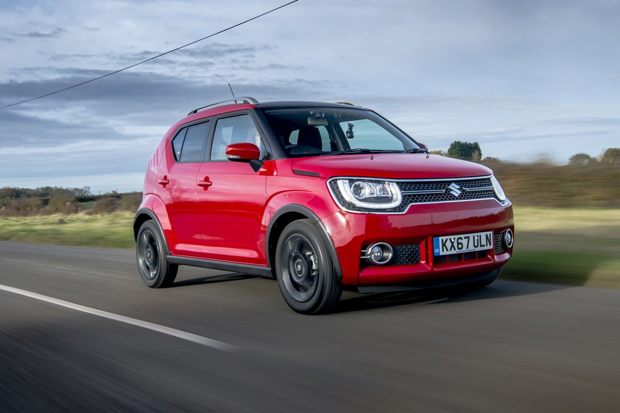
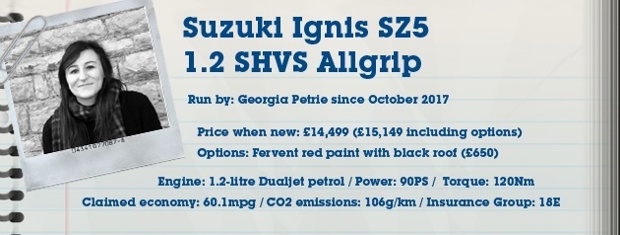
- Our little Suzuki Ignis arrives
- Rural roads and the Suzuki Ignis
- The Whizzkid reborn in our Suzuki Ignis
- Irritations in our Suzuki Ignis
- Talking trims in the Suzuki Ignis
- Cheap and cheerful or substandard city car?
- Range anxiety in our Suzuki Ignis
- Mild hybrid, what's that?
- Where are all the Suzuki Ignis?
- Suzuki Ignis versus snowy hills
- What's in a name?
- We bid farewell to the little Ignis
Our little Suzuki Ignis arrives
The Suzuki Ignis is the newest member of the HJ fleet, but what are Georgia's first impressions?
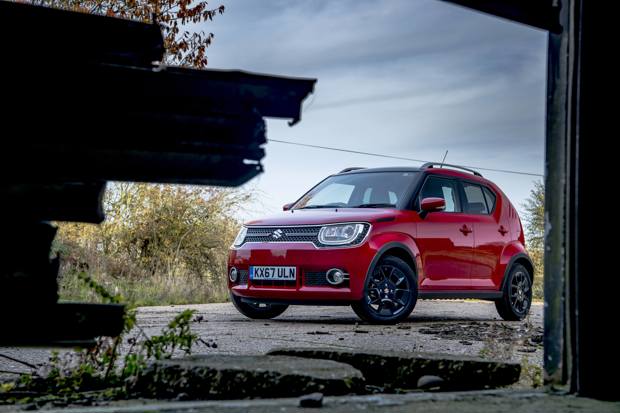
Date: 7 November 2017 | Current mileage: 463 | Claimed economy: 60.1mpg | Actual economy: 48.7mpg
The Suzuki Ignis is different. Quirky, unique, whatever you want to call it. It offers crossover styling, but in the dimensions of a city car. Regardless of whether you love or hate how it looks, there definitely isn't much else that offers so much character at this price.
Our top trim, mild hybrid variant is £15,150 if you're wondering. But the base spec model is a splendid £11,499 - which is £615 cheaper than a tiny Fiat 500.
Personally, I think it's pretty ugly. In fact, I repeatedly called it the Ugnis for about two months - until it was decided that I should have one for six months. It's also very similar to the Suzuki Baleno, I'd forget which car I was in if it weren't for the lack of turbo whine.
'Why is there no turbo whine?', you ask. Well, there's no turbo. And boy can you tell. Mixed with Suzuki's 'mild hybrid', the Ignis has about as much power as Theresa May without the DUP.
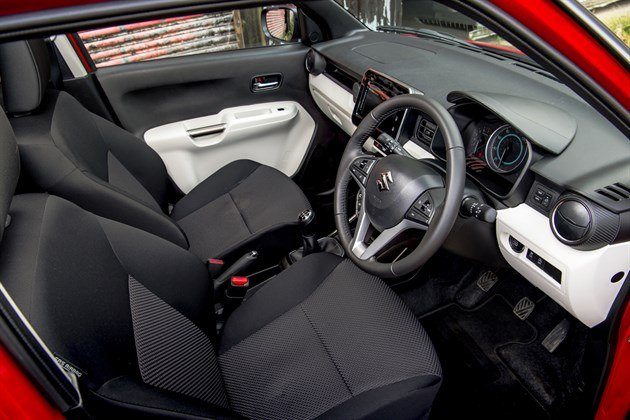
It's kind of cute inside...
Our Ignis comes with the only engine available, the 1.2 Dualjet. Suzuki's 'mild hybrid' system uses a belt-driven integrated starter and a second lithium-ion battery to enhance warm starts, take-off and acceleration.
While the little 90PS engine is fine around town, it's pretty hard work with the five-speed manual gearbox when it's pushed around on country roads (which is where I use it 90 per cent of the time). It isn't meant to be thrashed about like an Audi RS3, but overtaking at all is quite the challenge.
However, this obviously isn't the intended type of driving that the Ignis' designers had in mind. So, to be fair, it's pretty decent for a car in an urban setting.
The Ignis offers decent pricing, very decent fuel economy and a dash of character in the lacklustre city car class. But when it comes down to how I actually like driving it for half a year, ask me in a few months time...
Rural roads and the Suzuki Ignis
The Suzuki Ignis might be a top-class city car, but how does it fare when Georgia drives it in a less urban setting?

Date: 21 November 2017 | Current mileage: 989 | Claimed economy: 60.1mpg | Actual economy: 49.2mpg
There's no doubt that the little Suzuki Ignis is a great city car. First of all, it's tiny. Like cereal box tiny. Parking is a breeze, fuel economy is top notch and it's pretty fun to pootle around town in.
Around rural roads, like the potholed-country lanes that surround both the office and my house, the little Ignis is lively to drive. It can whizz round corners with no issues and offers a nice little boost of speed when necessary, but it also has a few pitfalls.
Namely, it can't handle hills well. And by well, I mean at all. My house sits atop a large hill, and getting back up the hill on my way home is a chore. It sounds as if the car is being powered by an angry hairdryer.
While it's quite nippy on the motorway, it drags its feet when building momentum. On top of that, you feel every pothole. Every single one.
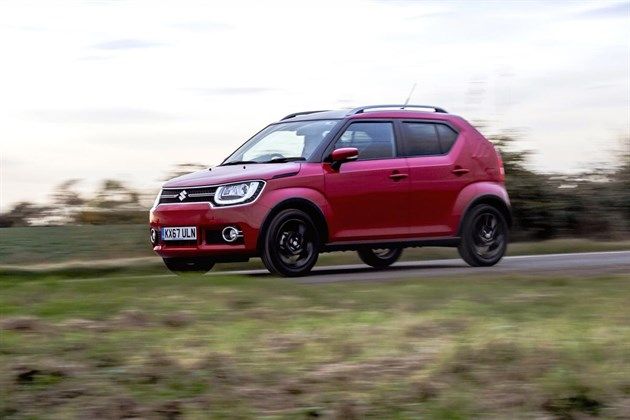
The Ignis can be pretty zippy when it wants to be
For the most part, driving it around country roads is at least better than the motorway. Driving it on the M25 is unpleasant. Between the lurchiness in start/stop traffic and the constant road and wind noise as soon as you go over 65mph - it's an uncomfortable experience.
But even at 60mph on the A47, the Ignis can feel a bit out of its depth. When it's windy, the Ignis feels a little less sure-footed than other small cars I've driven. And that's simply down to the fact that it's so lightweight.
The downside is that this lightness, as well as the relatively tall sides, make it more vulnerable than most on a blustery day. But, again, as it's a city car this isn't really a problem for most drivers who'll buy the Ignis.
So for my type of driving - mostly rural, with a little bit of city and motoryway driving thrown in - it isn't ideal. But it's a lot of fun and I've definitely spent less money on petrol this last month, which is always a positive.
The Whizzkid reborn in our Suzuki Ignis
Georgia takes a look at the influence of a Japanese cult classic on the Suzuki Ignis.
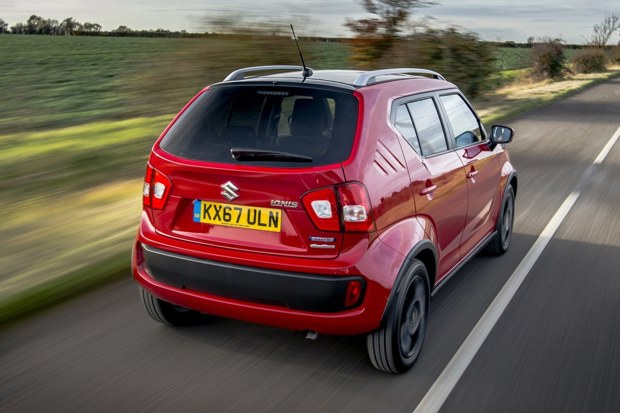
Date: 5 December 2017 | Current mileage: 1684 | Claimed economy: 60.1mpg | Actual economy: 50.8mpg
Evolution is an essential part of human existence (bare with this train of thought). To paraphrase Carl Sagan, "The simple passage of so many generations will have changed us, necessity will have changed us." And the same can be said about cars.
Rarely do cars come out of nowhere. Even in the tiniest details, cars are influenced by their predecessors - taking the best bits of what came before them. We only have to look back a few decades to pinpoint the Japanese cult classic that lent its DNA to the Suzuki Ignis.
In 1977, the Suzuki Cervo was launched in Japan, offering an underwhelming 539cc and 28PS to meet Kei car regulations. Kei cars are sometimes called Galapagos cars, as an homage to the tortoises of the same name that couldn't really adapt or survive anywhere else.
And yet, by 1979, a different creature emerged from the bones of the Cervo. The SC100GX 'Whizzkid' (a rear-engined, rear-drive micro car) got a dramatic 970cc, 47PS overhaul for the UK market - instantly gaining a cult following.
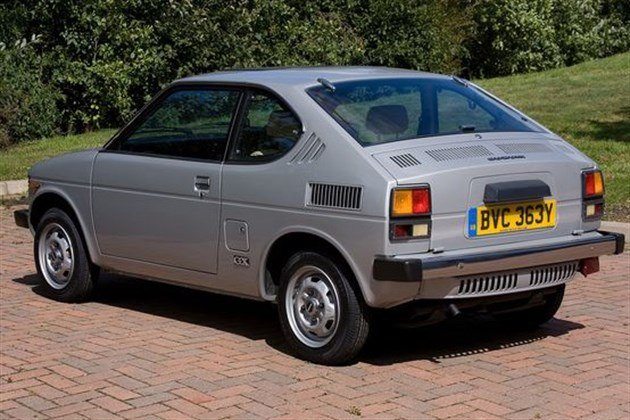
But it isn't just the chunky rear lights, sloped rear pillar and trio of fake cooling vents that conjure up memories of the 80s coupe. The Ignis teems with the same energy because, ultimately, nobody builds tiny cars that love to be thrown about quite like Suzuki does.
Now the Whizzkid wasn't a fast car, taking 16.5 seconds to go from 0 - 62mph. But sometimes how a car makes you feel is more important than the figures it offers. Foot to the floor, thrown into corners going as fast as it can manage, revving like mad - there's no doubt that Suzuki is trying to evoke a sense of nostalgia.
Sadly, the Suzuki's Whizzkid is beyond rare these days, thanks to bodywork that dissolves like a Berroca, with only 20 left on British roads in 2017. But the Ignis, despite its more mature looks and larger proportions, definitely keeps the spirit of this fun little classic alive.
It might not be as exciting as the Whizzkid, as well-known as the Swift or as typically Japanese as the Lapin (obviously not sold in the UK) - but the Ignis offers its own unique personality to an all too familiar class of city cars. After all, without evolution, the Whizzkid would still be the lacklustre Kei car of its first incarnation.
Irritations in our Suzuki Ignis
Georgia starts to notice little niggles with the Suzuki Ignis.
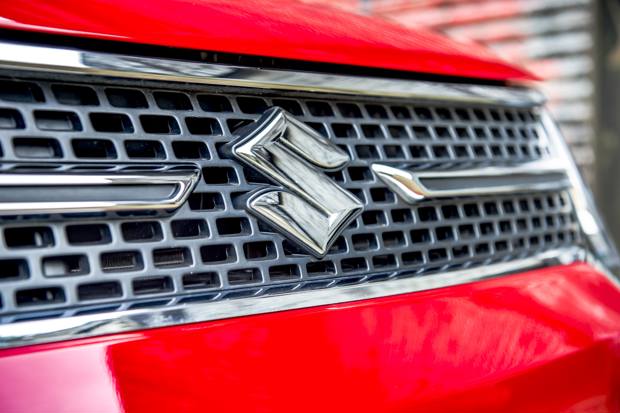
Date: 19 December 2017 | Current mileage: 2471 | Claimed economy: 60.1mpg | Actual economy: 53.1mpg
I've had the Suzuki Ignis a while now. Long enough to voice a few complaints, I think. While I generally like the car, there are definitely some things that constantly irritate me.
Firstly, the Ignis is very lightweight - 920kg to be specific. I love Suzuki because they build tiny cars that you can really throw around and the high revving Ignis is no exception. But blimey, it's very noisy inside the cabin.
And you can feel every single pothole as well, which isn't great on the backroads I usually traverse on my commute. But these issues are minor things, which I generally ignore by playing my music extra loud.
As I've said before, the Ignis is a great city car - which is not at all what I use it for - so that has to be taken into account. The lack of power can get very weary, meaning that for rural use where overtaking is a necessity (unless you want to sit behind a truck doing 55mph) it isn't at all ideal.
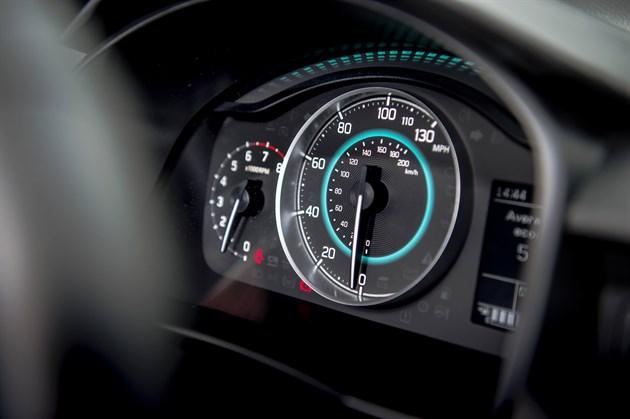
The dashboard clearly displays how much input the battery is having while you drive
Something I do find bizarre is the lack of digital speedometer. In no way is this a massive subtraction from a decent car, but where you get so many extras for fairly little money - it's a point worth noting. And the boot is the size of a thimble, despite a spacious cabin.
Fuel economy is good in the Ignis, I'm personally getting around 53.1mpg after using the Ignis for five months. But, considering it's a mild hybrid (using a small battery to improve fuel consumption), there are plenty of 1.0-litre hatchbacks that do a little bit better.
For example, the SEAT Ibiza our Dan has been running for six months is more expensive to spec to the same level. But, if you don't care too much about DAB radio and a reversing camera, you can get a more refined model that can do 54.4mpg - even though both models have a claimed economy of 60.1mpg.
Aside from that, there's only one other small thing that bothers me. The car beeps everytime it locks and unlocks, which is fine when your looking for your Ignis in a car park - but it does make me a bit anxious about waking up my neighbours baby when I have to leave early in the morning or return late home...
Talking trims in the Suzuki Ignis
Georgia figures out what you actually get for your money in the Ignis, compared to the standard equipment in a Volkswagen Up.
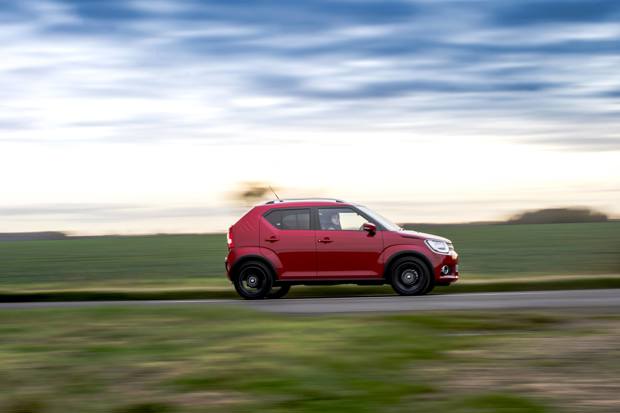
Date: 2 January 2018 | Current mileage: 2996 | Claimed economy: 60.1mpg | Actual economy: 53.2mpg
Let's talk trim levels. Exciting, I know. But when it comes to price, trim and options can be the difference between £10,999 and £15,150 - as I'm about to explain.
The Suzuki Ignis comes in three trim levels - SZ3, SZ-T and SZ5. Why no SZ4? I have no clue. The lowest trim SZ3 offers DAB radio, front fog lights and Dual Camera Brake Support (essentially Emergency Assisstance Braking). For £2500 more, the SZ-T comes with a rear parking camera, navigation, Bluetooth, roof rails, and keyless entry and start.
So, while the Ignis looks expensive on paper compared to something like the Volkswagen Up, this isn't exactly the case. A base model Ignis is £11,499 (although it's currently on offer at £9999) while the cheapest Volkswagen Up is £9325.
So Volkswagen's 1.0-litre model is cheaper. Plus it comes with DAB radio, hill hold assist and some Volkswagen Connect bits and bobs - like driver analysis - as standard. The Ignis also has DAB radio along with automatic headlights and a tyre pressure monitoring system.
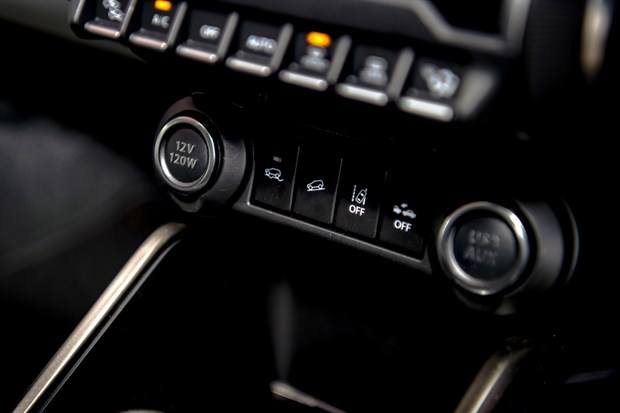
Buttons, buttons, buttons...
The top spec Ignis SZ5 is £14,499 (currently £12,499), while the Volkswagen High Up is £13,080. The Ignis SZ5 comes with automatic air conditioning, built-in navigation (as well as smartphone navigation connectivty, cruise control, rear parking camera and keyless entry/start.
Cruise control and rear parking sensors are an extra £300 on the High Up, a rearview camera is £160 and climate control is £265.
And, while there may be other options on the Up that don't come on the Ignis (like heated seats), I think you get more included in the price of a top spec Ignis than an Up. However, do I think the Ignis is a better car? No, I don't.
The Up is an incredibly good city car, even though you have to pay for all those little extras. It's more enjoyable to drive and feels more comfortable. But if you want a more spacious mild hybrid with heaps of character, then the Suzuki Ignis is perfect for you. At the end of the day, it's all about what you'd rather drive around in.
Cheap and cheerful or substandard city car?
So the Ignis is cheap, but is it cheerful? Georgia gets into whether quality is worth paying that little bit more for...
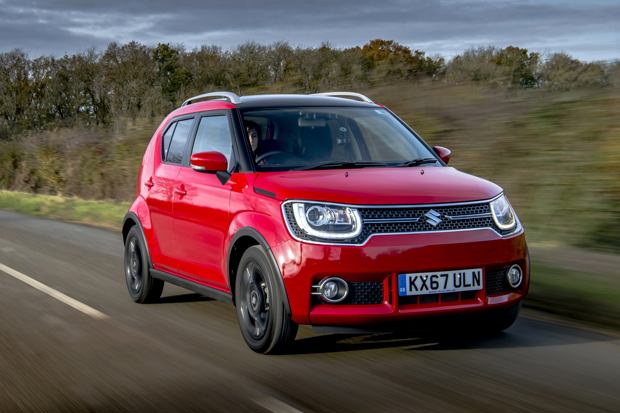
Date: 16 January 2018 | Current mileage: 3568 | Claimed economy: 60.1mpg | Actual economy: 53.2mpg
Our Suzuki Ignis is the top spec SZ5 model, yet it's still not overly expensive. At £15,149, our model comes with a lot of good extras. We have 4WD, ABS, hill hold and descent contol, a rear parking camera, cruise control and stop-start.
All Ignis models get Bluetooth and DAB radio plus we added a bunch of styling options like rear tinted windows and a bunch of chrome bits. Side note: the climate control system looks a bit like the Cryptex from The Da Vinci Code.
Yet, this is not a car that hides where money has been saved. The doors feel paper thin, which is especially noticeable against other non-expensive cars in their respective classes - like the Ford Fiesta.
There are no soft-touch, squishy materials. In fact, it’s all very hard and makes a nasty hollow noise when you tap it. The driving position needs far more adjustment and the whole interior generally feels like a Ryanair flight.
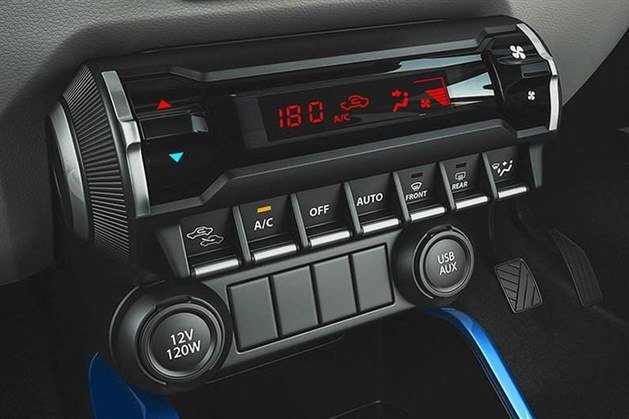
Maybe it's hiding a secret message about how to get the claimed fuel economy...
But, if you're the sort of person who thinks spending money on dampened buttons so they sound nicer to click is stupid, the Ignis probably won't bother you too much. Although, not being able to fold in the wing wirrors might stress you out a bit, especially if you park on the street like I do.
I don't necessarily consider myself as someone who cares too much about luxury cars. I'm partial to heated seats - but things like electric boots, in-built air fresheners and ambient lighting don't appeal to me too much.
However, the gearbox in the Ignis is a little bit irritating (and frequently doesn't like to go into reverse). And small things you dont think about might bother you. For example, the rear windscreen wiper isn't intermittent, so it wipes constantly even if you turn it on when it's only drizzling - making that horrible dragging sound across the glass.
I think the Ignis is quirky, despite it's flaws. It definitely feels cheap compared to the Volkswagen Up, but it isn't Dacia Sandero level bare inside - which is nice middle ground to occupy.
Range anxiety in our Suzuki Ignis
Georgia goes through the Suzuki Ignis' own form of range anxiety...
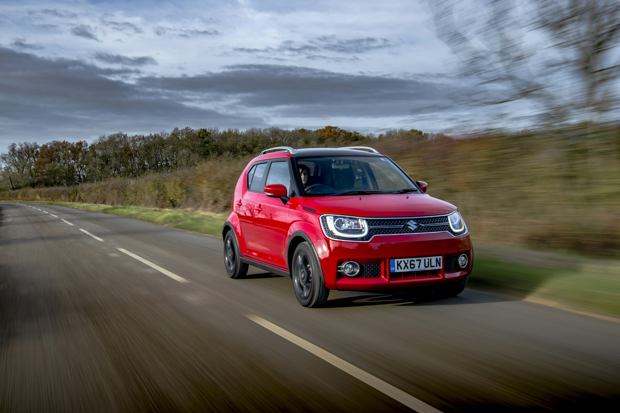
Date: 30 January 2018 | Current mileage: 4412 | Claimed economy: 60.1mpg | Actual economy: 52.3mpg
Range anxiety. A term usually reserved for electric cars. Yet, I feel it's apt to discuss the Ignis' own form of range anxiety.
Our model is a petrol, as all Ignis models are. But it also has a mild hybrid system, which really works just to make the engine feel bigger than the 1.2-litre that it actually is. It allows you to drive in a higher gear and improves fuel economy, with the battery topping up when you stop accelerating.
But here's where it gets weird. Sometimes I'll leave my house with 100 miles left of fuel (which you can always give or take a little from) and drive the 25 miles to work. Yet, when I arrive I've got 98 miles of fuel left.
Other times, I'll have 50 miles of fuel left and within five miles of driving, it will have plummeted to 15 miles. As someone who's a tad anxious about running out of fuel (because there's few fuel stations near my house), it's a little bit unsettling.
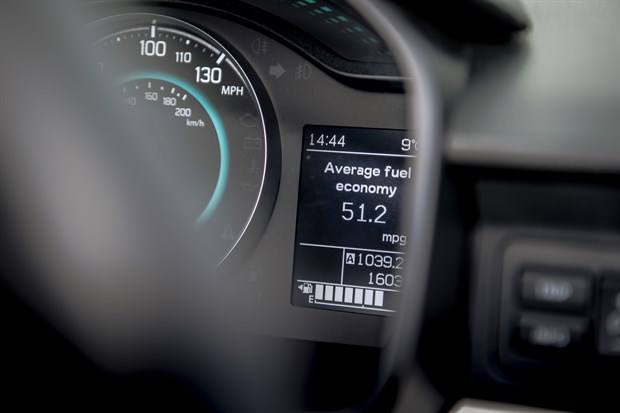
The dashboard is a little bit basic on the Ignis.
I've never actually run out of fuel, mind you. I've only had the fuel light come on in the Ignis a handful of times, but I tend to get fuel sooner than I would because of the Suzuki's strange little habit.
As someone who tends to get fuel when I've got about a little under a quater of a tank left (50 miles or thereabouts), I've now begun filling up when I have 70 miles left. Considering Suzuki cut the tank down in size in their weight-shedding attempts, a full tank (32 litres) only gets me a little over 300 miles.
So I have to refuel about once every four days, which isn't abnormal - but it's a lot when I only do about 50 miles a day. As I've said before, I don't drive the Suzuki Ignis as the city car it's intended to be. So this won't be an issue for most people.
But if you live out in the sticks, it's worth bearing in mind that the tiny fuel tank capacity will mean having to fill up a lot more than for something like a SEAT Ibiza (40-litre tank), which has the same official fuel economy figure.
Mild hybrid, what's that?
Georgia has the mild hybrid Suzuki Ignis, but what does that mean exactly?
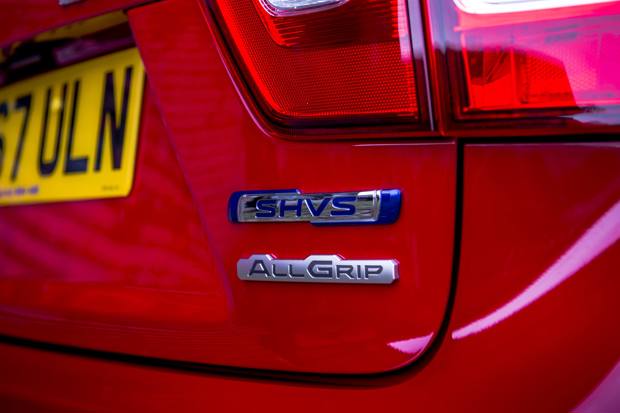
Date: 6 February 2018 | Current mileage: 5258 | Claimed economy: 60.1mpg | Actual economy: 52.4mpg
We have the Suzuki Ignis SVHS SZ5 4W. Confused about what that means? Well you aren't alone, Suzuki loves an acronym. SHVS stands for Smart Hybrid Vehicle by Suzuki, not as exciting as it sounds really.
So it's a hybrid? Not exactly. It's a mild hybrid, which means it has a small battery that sits under the front passenger seat. This powers a starter-generator that's attached to the engine in a way that's a bit boring to explain.
Essentially, it’s not big enough to move the car on its own, but it does improve the Ignis' performance at low revs. If you ease off the accelerator while driving, it'll top the battery back up again - which it shows you it's doing on the dashboard (even though it looks like a diagram drawn by GCSE physics students).
It's no Toyota Prius - you can't plug it in like a kettle, the 7kg lithium-ion batteries fit under the seat and you can't run in EV mode for more than a few feet at a time.
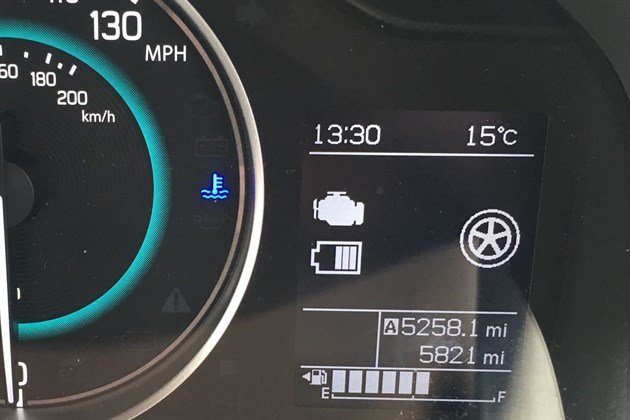
I wasn't joking about that diagram...
But the system works to make the engine feel bigger than the 1.2-litre that it actually is, allowing you to drive in a higher gear than you might expect, reducing revs and helping fuel economy.
It's a subtle booster for hills and mild acceleration, like a turbo, but Suzuki says it's more cost-effective. And you don't have to deal with all the faff that comes with something like a PHEV.
Basically, it's a set-up that's cheaper, lighter and simpler than a full hybrid, doing without the heavy batteries and electric motor.
Plus, the hybrid version knocks two seconds off the 0-62mph time (10.8 seconds), before reaching a top speed of about 106mph. Although, the wind noise is bad enough at 70mph not to push it much faster for my own sanity.
Where are all the Suzuki Ignis?
City cars are massive in the UK, with Volkswagen Up being a popular sight about towns. But where are all the Ignis?

Date: 20 March 2018 | Current mileage: 5511 | Claimed economy: 60.1mpg | Actual economy: 52.4mpg
I've been running the Suzuki Ignis SZ5 for six whole months now, and it's almost time to send it back home (all the way back to Milton Keynes). My relationship with the little Ignis has changed over time - from hating the way it looked, to liking the way it looked, then hating the way it drove.
I no longer hate the Ignis, which is as surprising to me as anyone. In fact, I've begun to wonder why I don't see many on the road. I've heard that around 4000 models have to be sold before you start seeing them on the road regularly.
Yet, Suzuki sold about 6300 in the UK in 2017. But aside from mine, I've only seen about five others. And based on this, I've deduced that people only buy red Ignis (because it's the free paint colour).
I've also realised that, like the Honda Jazz, the practical nature and quirky looks appeal to a more mature class of drivers. As I've said in previous updates, I actually think the Volkswagen Up is a better all round city car.
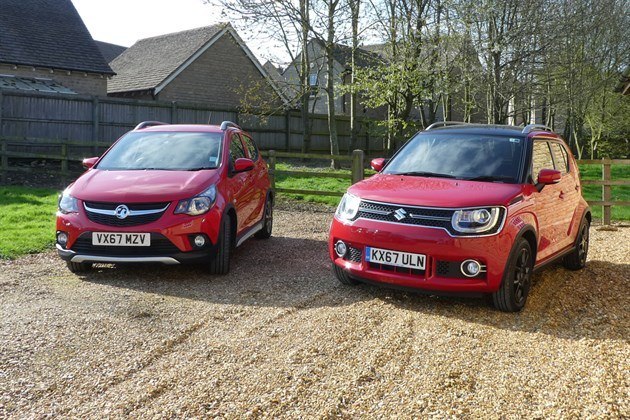
The Ignis next to a similarly sized Vauxhall Viva
However, the Suzuki Ignis offers an alternative choice to the same-old, same-old breed of little cars. Especially because the Skoda Citigo, SEAT Mii and VW Up are all the same under the skin - they just look a bit different on the outside. Like the Orphan Black clones of the city car class.
The Ignis isn't as refined as some other models, but it upsets the applecart in the sense that it isn't what people have come to expect from this class. It's taller, wider and more of a miniature crossover than a city car - and it still offers good standard equipment, excellent fuel economy and it's easy to park.
While the Volkswagen Up deserves its reputation for refinement, comfort and quality interior, I can't see why more young people don't lean towards the left-field Suzuki Ignis when looking for a runabout.
I've definitely seen more in the last few months of running the Ignis, there's even a house in Bedfordshire that has two Ignis on the driveway (one is gold too). Maybe they're infiltrating the city car market slowly, but if you're considering it, I would definitely recommend the Ignis. It really is a great little car.
Suzuki Ignis versus snowy hills
It's snowed a lot recently, but how has Georgia's Suzuki Ignis coped with the conditions?
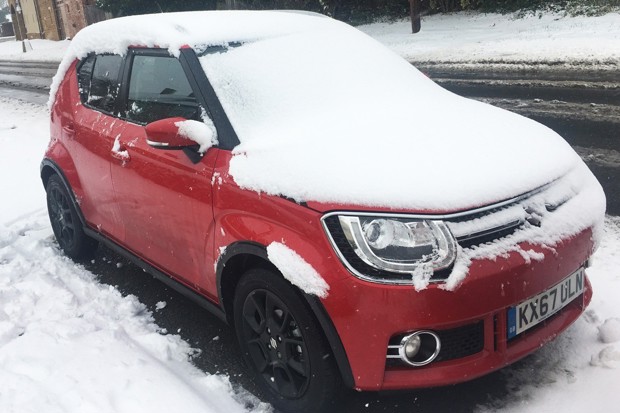
Date: 6 March 2018 | Current mileage: 5930 | Claimed economy: 60.1mpg | Actual economy: 52.1
So, it's snowed a lot this winter - which isn't really a revelation to anybody. We've had Storm Emma, the Beast from the East and even the Beast from the East 2.0.
I think everyone would agree when I say the UK has had more than enough snow this year. Namely because the entirety of the country grinds to a halt when this happens.
But while trains stopped running, entire sections of the motorway shut and rural towns were cut off from their local Asda - how did my little Suzuki Ignis get on?
If you'd asked me after the fairly light snow in January, I'd have said the Ignis was alright. Not great, I mean it struggles to get up hills anyway, but it did the job.

I mean, just look at the road out of my village...
But fast forward to the most recent snowstorm, the Beast from the East. The little village I live in is fairly rural and it's on top of a hill, and the backroads aren't gritted. So it's a fairly treacherous journey to work.
I have the ALLGRIP 4-wheel-drive system in my Suzuki Ignis and boy was it necessary. I didn't see many small cars out on the roads the day of the worst snowfall, unsurprisingly. I ventured out nonetheless, but it wasn't all plain sailing.
A patch of icey, compacted snow caused my Ignis to slide sideways across the road at one point and into a ditch - a situation that I was almost certain could only be rectified by a bigger vehicle pulling my car out of the snowbank it sat in. Yet, I actually managed to get the car back onto the road with a bit of effort.
And in doing so, my opinion of the Ignis has changed slightly. In terms of a small car, the Suzuki Ignis is arguably one of the best little motors you could put your trust in for weather conditions like this - even though the UK doesn't generally see much snow. Just make sure you get the 4WD system.
What's in a name?
Georgia investigates what the word Ignis, among some other car names, actually means.
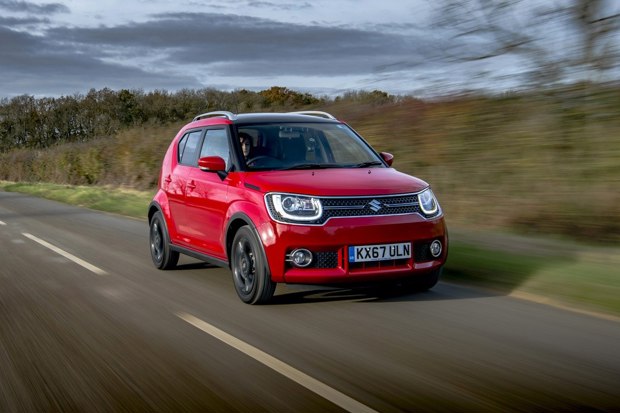
Date: 20 March 2018 | Current mileage: 6240 | Claimed economy: 60.1mpg | Actual economy: 53.4mpg
I'm going to take a step away from talking about fuel consumption, ride comfort and cabin noise this week. Instead, I'm going to talk about where the name Ignis actually comes from.
I've always been interested in where names come from. My name, Georgia, was chosen because it was one of the least popular baby names from the year before I was born (at least that's what my Mum told me). A decision I was grateful for when I had four friends called Amy at secondary school.
So, my name means 'farmer' (thanks Mum) - but what does Ignis mean? It's literal translation is 'fire', and I'd hedge my bets that it comes from Ignis Fatuus, which is Medieval Latin for 'foolish fire'.
This foolish fire is more commonly refered to as will-o’-the-wisp, a ghostly atmospheric light seen by travellers over swamps and marshland. It resembles a flickering lamp and, in folklore, is said to recede if approached, leading travellers astray.
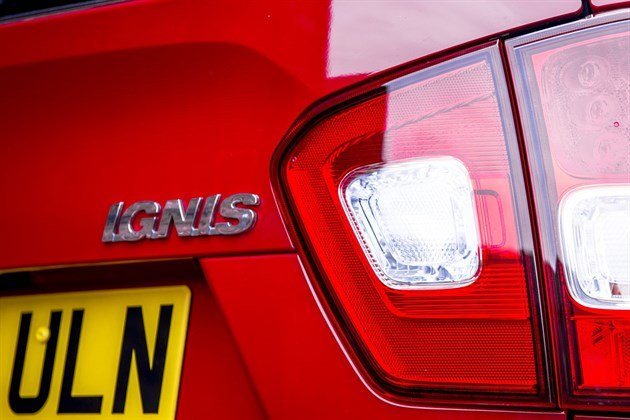
The phenomenon is believed to be due to the spontaneous combustion of gas from decomposed organic matter, like a smelly Northern Lights, kind of. But, Suzuki isn't the only manufacturer with an interesting history behind its name.
For example, the most widely held theory about the Jeep is that the military designation GP (for Government Purposes or General Purpose) was slurred into Jeep. By the 1940s, the name Jeep was used to describe any car that the military used with four-wheel-drive. The actual brand name was acquired in the 1950s.
Subaru is Japanese for the Pleiades star cluster found in its logo, and Volvo means 'I roll' in Latin (not eye roll, which you might be doing if you've read this far).
So, is the Suzuki Ignis the little fire of it's namesake? Well, I don't think I'd use that exact word to describe the little mild hybrid, but it's definitely fun to fling around country road corners.
We bid farewell to the little Ignis
The Suzuki Ignis leaves the HJ fleet after six months, so what are Georgia's final thoughts on the marmite city car?
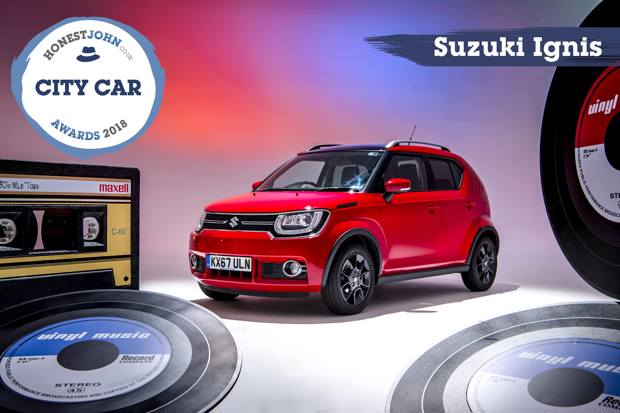
Date: 3 April 2018 | Current mileage: 6571 | Claimed economy: 60.1mpg | Actual economy: 53.1mpg
The Suzuki Ignis is due to leave the HJ fleet after six months, so what are my parting thoughts on the strange little city car?
Well, it's very worth mentioning that the Suzuki Ignis won the Honest John City Car 2018 award. And, because our awards are picked by how popular pages on the site are with our readers - rather than by us - it's a huge vote of confidence for the little Ignis.
While it's a bit of a black horse - low running costs, a practical nature and extra character make it an attractive option. That's why, although it isn't hugely popular with buyers, those who do own the Ignis really quite like them.
It isn't perfect, no car is after all. The ride is a bit bumpy, the interior feels cheap in places and the 1.2-litre Ignis definitely isn't as powerful as some 1.0-litre turbocharged city cars. In October, I said the Ignis has about as much power as Theresa May without the DUP - and I stand by that.
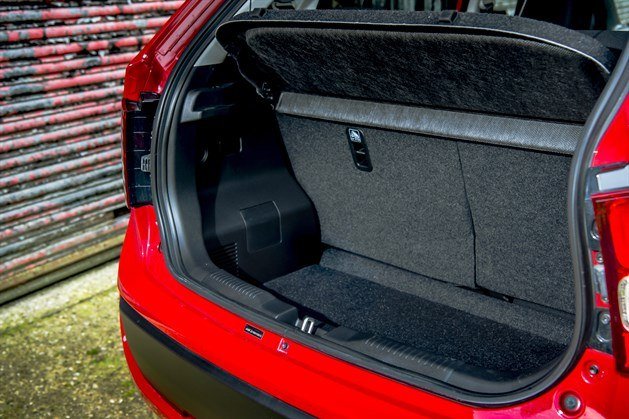
The tiny boot is a buzzkill if you ever want to transport anything without folding the back seats down
Yet, it's a great car to drive, and a bit of throwback to the Japanese cult classic that lent its DNA to the Suzuki Ignis' styling: the wonderful Suzuki Whizzkid.
Revving hard and throwing itself into corners going as fast as it can manage, there's no doubt that Suzuki is is the king of little cars that are just as good pootling along 30mph urban roads as they are going flat out in more rural settings.
If nothing else, the Ignis evokes a sense of nostalgia for a time when cars were designed with a little bit more heart, which is something it has heaps of. It keeps the fun feel of classic small cars alive, without compromising on modernity.
It might not win out with younger drivers against the Fiat 500. It isn't as classy as the Volkswagen Up or as exceptionally popular as the Hyundai i10, but sometimes the niche option is one worth exploring.
